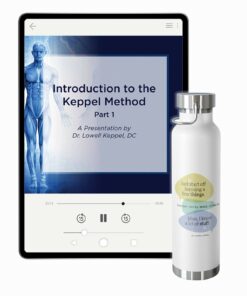We have arrived at back to school! Kids are starting both classes and sports, so this is a vital time to take a look at the children of your patients.
Did you know that every year teenage athletes drop dead from sudden cardiac arrest? According to the Cleveland Clinic, sudden cardiac death kills one in 100,000 to one in 300,000 athletes under the age of 35, more often males. Sudden cardiac arrest is due to an “electrical” problem in the heart. It happens when electrical signals that control the heart’s pumping ability essentially short-circuit. As Chicago-based cardiologist and sports medicine doctor Christine E. Lawless explains, “In the younger people, we’re looking for inherited diseases of the myocardium [the heart’s muscular tissue], of the electrical system, and then of course, congenital [heart] diseases.”
And in a 1953 paper on malnutrition and health, Dr. Royal Lee traces the cause of extra heartbeats and fibrillations to a deficiency of factors in the B vitamin complex:
“The cause [of sudden cardiac arrest] is a deficiency of the cereal germ vitamins, B4 in particular. This fraction of the B complex is essential to normal function of motor nerves. It has also been called the ‘anti-paralysis vitamin.’ It is inseparable from natural thiamine [B1], and it is never found in synthetic thiamine. It is, further, the physiological remedy for enlarged heart, for it is this factor in the B complex that maintains vascular and muscle tone.
“A continued deficiency of B4 results in greater or lesser degrees of nerve and muscle degeneration, but all of the above effects of its deficiency usually respond quickly, in some degree, to its administration. An enlarged heart—with its distorted and leaking valves, as shown by murmurs—usually becomes almost normal within a few minutes after ingestion of the natural B complex carrying the wheat germ concentrate [Standard Process Cataplex B], except for a prolonged first sound, the indication of tired muscle.”
—Dr. Royal Lee, “A Few Comments on the Relation of Abnormal Heart Sounds to Malnutrition” (full text available free at the SRP Historical Archives).
The B vitamin complex is critical for nerve health. It’s also needed to metabolize carbohydrates to use as fuel in the Krebs cycle and in the citric acid cycle for energy production. The use of Cataplex B will also help students maintain attention in the classroom. Therefore, the recommendation for Standard Process Cataplex B should not be limited to student athletes alone, but ra ther every child. I recommend making sure your students take six Cataplex B per day, three before class and three when they get home from school.
ther every child. I recommend making sure your students take six Cataplex B per day, three before class and three when they get home from school.
Supplementation is necessary because the B4 factor is not readily available in a diet of refined, fast, and processed foods. And due to the ever-popular gluten issue, a growing portion of the population no longer eats an adequate amount of whole grains, especially wheat germ and bran.
Even more disturbing is what you might call the root of the problem. The B complex, including B1 and B4, which are always found together, depends on the presence of a specific fungus, mycorrhiza, on the roots of grasses. Mycorrhiza fungus creates the vitamin B complex, which is then taken up by the grass and consumed by the animal. The only way to ensure we’re getting the entire vitamin B complex is to eat plants and animals raised on healthy soil and grasses.
Our students and athletes are only as healthy as the food they consume. Let’s seek out the best we can for them to make sure they have a great year in the classroom and on the field!
Images from iStock/monkeybusinessimages (main), Ben-Schonewille (post).





